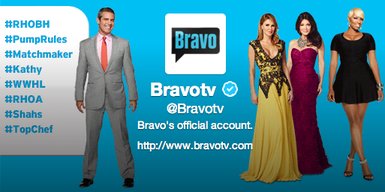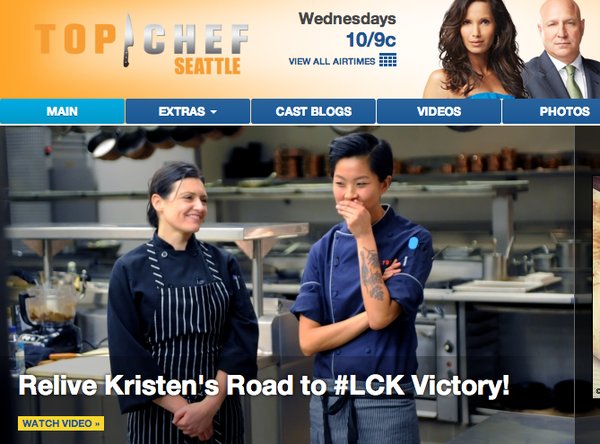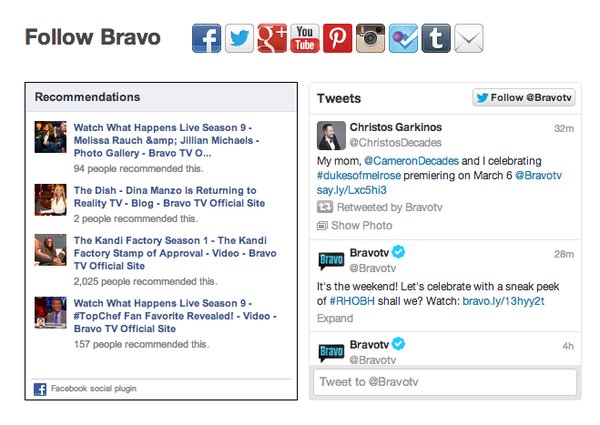Brands
Cable and Content: Bravo Digital Media Escapes the Box
Maybe it’s not enough to simply show your audiences their favorite shows intercut with commercials anymore if one takes recent innovations at Bravo as a harbinger of viewership to come.
The nature of content has changed the way we see and tell stories.

Hsia recently spoke with Shafqat Islam, co-founder and CEO of NewsCred about what telling stories — creating content — means when the audience is no longer confined to a single narrative thread. The Feb. 21 meetup also examined the challenges of being an old-school content provider in this new-school realm.
Identity Crisis: Brand and Content

The one-screen, one-way cable-programming paradigm is old-fashioned, and recent moves by Bravo point to a new wave when it comes to audience behavior. The two-screen revolution will be televised, and streamed, and shaped by the people who are watching and reacting to it.
First things first: If you want to build a brand, as a cable programming provider, you need a popular show. But Bravo also wants to preserve an identity as a brand. That’s increasingly difficult in an on-demand world.
“The bottom line is that people care about shows,” Hsia said.
“Half the people maybe have no clue what network Top Chef is on,” Hsia continued. “It could be the Food Channel for all they know. This is a struggle that old media is having.”
Hsia wants to ensure, via a strong content strategy, that the company’s audience is always aware of the branded experience of watching the channel as well.
Transmedia: Crossing the Line at Bravo
One way to do this is to remind viewers that Bravo is important to their experience: the channel is putting its content in the audience’s lap.
Shows such as Top Chef are breaking narrative ground, going beyond just voting for the winner — its producers are making transmedia storytelling. Bravo pushes its audience to the Internet to find out how episodes end, and it pulls them into a conversation about how a show should end.

“In Top Chef, as contestants were eliminated, they competed in a digital series, competing to get back on live,” Hsia said. “There was a whole social component driven by tweeting: save my chef. So then, the finale of the digital series — it was the winner of the digital series with the fan favorite — that person actually entered the [televised] finale.”
Such cross-platform seems to be working. “That was the biggest sponsorship we ever had,” she said.
And according to Hsia, some 40% of Top Chef viewers checked out the digital series Last Chance Kitchen — an enormous conversion rate, and Hsia knows it. But it’s an enterprise she said cannot be taken for granted. Success means striking a balance, and requires skillful deployment.
“There is an argument to say: just show it all on TV and let me be a vegetable,” said Hsia. “That’s the whole question, because at one point or another you could irritate your audience. The line between TV show and digital … we’ve crossed the line. “
Curve of the Real: Interactivity and On-Demand
If Bravo makes waves with interactivity and second-screen applications, what happens if the audience watches a program in something other than real-time? Doesn’t the secret weapon have an Achilles’ heel — the DVR?
Yes, said Hsia, DVR (and equivalent technology) can be the enemy of real-time interactive. If Top Chef‘s winners are already determined, then what’s the use of the online content after the show is done? Hsia suggested the answer might be a post-finale curated experience, including cherry-picked special interactions, celebrity voices, and whatever there was about that second-screen experience that people might have missed or be willing to visit after the season’s end.
“I’ve seen a couple of vendors who shows us features where you can see: ‘Roland said this about this moment,'” Hsia said. “I’m still trying to figure that out. I still think it’s still a little restrictive. How do we make a curated conversation the most meaningful it could be?”
Bravo is pushing to beat a curve. It wants be among the first of the providers who get that future right.
Publisher’s Note: A previous version of this story stated Bravo’s Last Chance Kitchen conversion rate was as much as 60%, which Bravo later claimed to be inaccurate. We regret the error.
Get better at your job right now.
Read our monthly newsletter to master content marketing. It’s made for marketers, creators, and everyone in between.




